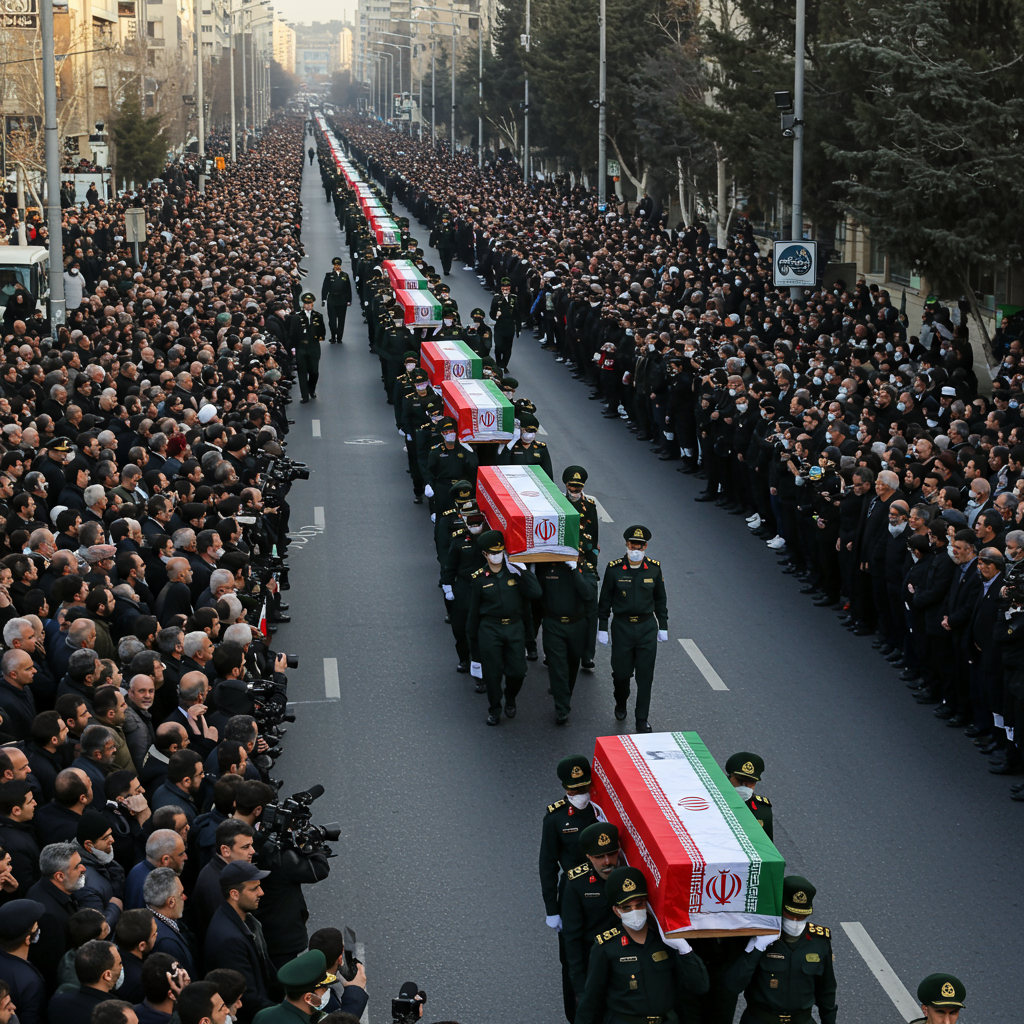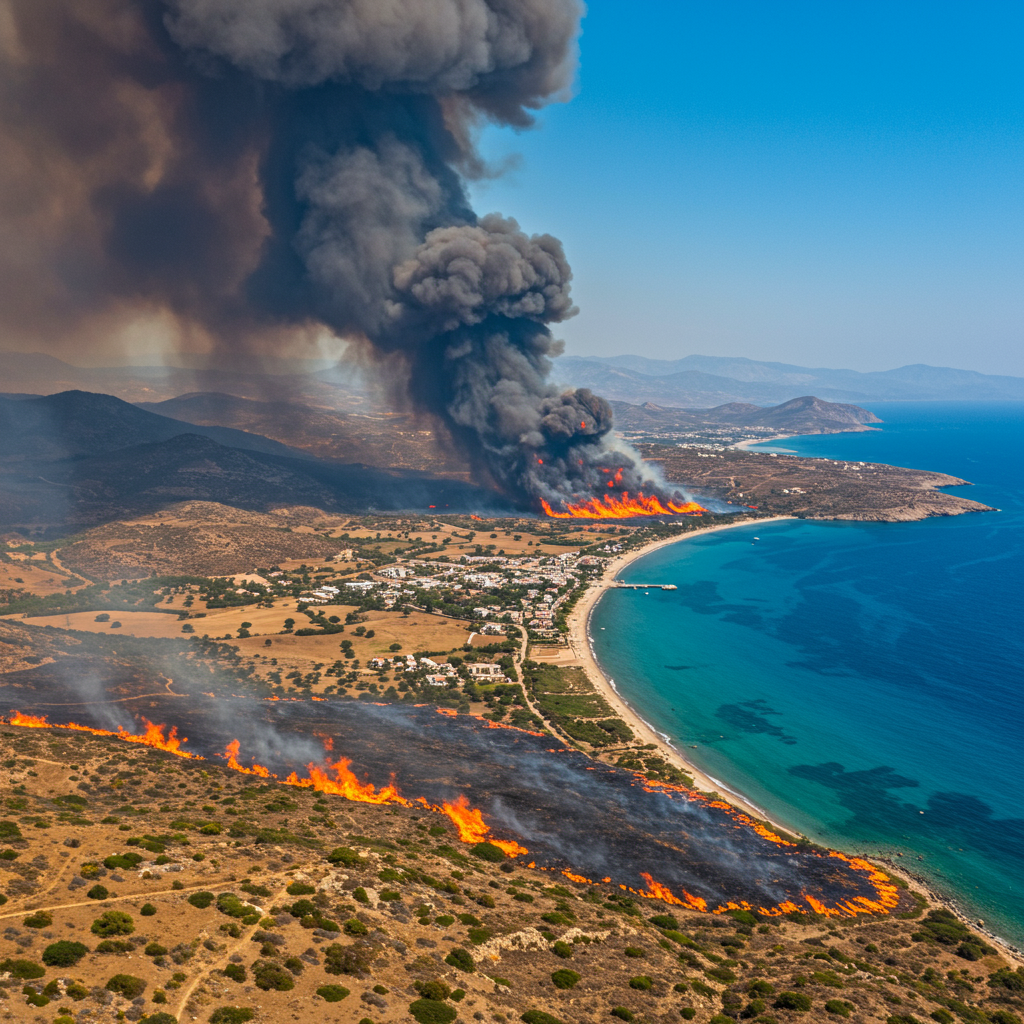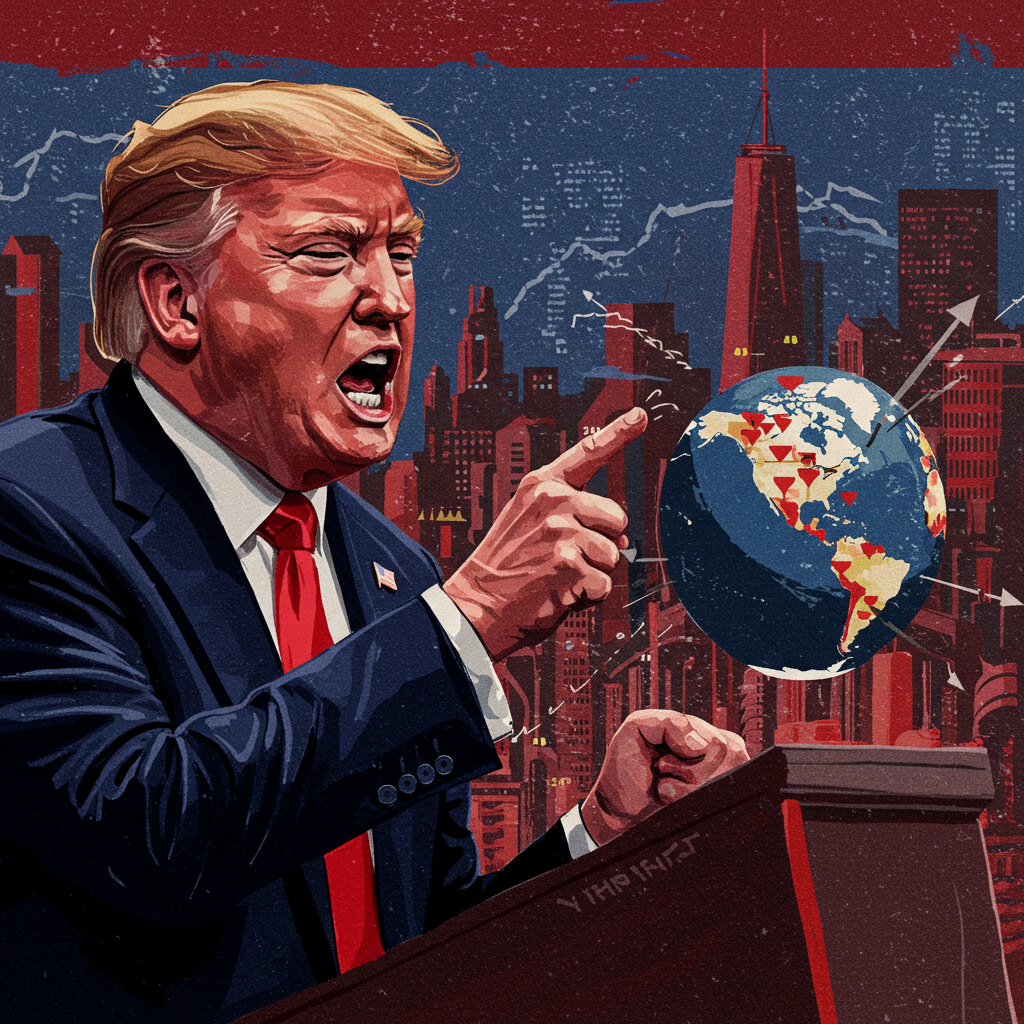In a powerful display of defiance following a brief, intense conflict, Iran held a massive state funeral in Tehran on Saturday, June 28, 2025, honoring senior military figures, nuclear scientists, and other individuals killed in recent Israeli and US strikes. Tens of thousands, potentially hundreds of thousands, lined the streets as flag-draped coffins were carried through the capital. The ceremony served as the first major public gathering since a ceasefire ended the 12-day confrontation, highlighting the deep-seated animosity and unresolved tensions simmering beneath the surface of the temporary peace.
The Funeral Procession: Honoring the Fallen
The funeral event unfolded along Tehran’s central Azadi Street. State television captured footage of vast crowds dressed predominantly in black, waving Iranian flags, and carrying portraits of the deceased. Coffins, draped in the national flag and featuring images of prominent commanders, were transported on trucks through the densely packed thoroughfare. Authorities had closed government offices across the country, allowing public servants and citizens alike to attend the solemn yet politically charged ceremony. The sheer scale of attendance underscored the national significance attributed to the lost individuals.
The procession specifically honored a total of 60 individuals killed during the recent hostilities. These included not only top military brass and scientists but also civilians, with reports noting four women and four children among the deceased. The inclusion of non-combatants in the mourning further fueled public anger directed at Iran’s adversaries. Mourners widely chanted anti-US and anti-Israel slogans, including repetitions of “Death to America” and “Death to Israel,” alongside instances of burning flags representing both nations, sending a clear message of enduring hostility.
Context of Conflict: 12 Days of Escalation
The deaths being mourned stemmed from a concentrated 12-day period of conflict between Iran and Israel, which escalated significantly with direct US involvement towards its conclusion. The confrontation began on June 13, 2025, with a series of large-scale Israeli strikes targeting Iran. Israel stated its primary objective was to dismantle aspects of Iran’s nuclear program, citing concerns over uranium enrichment levels nearing weapons-grade and viewing Iran’s capabilities as an existential threat. Israeli strikes specifically aimed at senior military and scientific officials believed to be integral to both military operations and the nuclear effort, alongside hitting military infrastructure and nuclear-related facilities across Iran.
Iran swiftly retaliated against the initial Israeli attacks, launching numerous ballistic missiles towards Israel. While Israel’s Iron Dome defense system intercepted many of these projectiles, some successfully penetrated defenses, causing damage and resulting in casualties. The conflict intensified on June 21 when the United States directly intervened, launching strikes on three key Iranian nuclear sites: Fordow, Natanz, and Isfahan. US forces reportedly used “bunker-buster” bombs at Fordow and fired Tomahawk missiles at other locations, actions described as causing significant damage. Iran responded to the US strikes by firing missiles at a US military base located in Qatar. The intense exchange of fire across the region concluded with a ceasefire announced on Tuesday, June 25, just days before the large-scale funeral took place.
Key Figures and Casualties
The casualties from the conflict included some of Iran’s most senior and influential figures. Among those honored at the funeral were the chief commander of the Islamic Revolutionary Guard Corps (IRGC), General Hossein Salami, and the head of the IRGC’s crucial ballistic missile program, General Amir Ali Hajizadeh. Both generals were reported killed on June 13, the very first day of the Israeli offensive. Other high-ranking military personnel killed in the Israeli attacks included Major-General Mohammad Bagheri, identified as the Army chief of staff or deputy commander of Iran’s armed forces. Prominent nuclear scientists, such as Mohammad Mehdi Tehranchi, were also among the dead. Ali Ghanaatkar, the top prosecutor at Evin prison known for prosecuting dissidents, was another notable figure reported killed and scheduled for burial in Qom. General Bagheri was slated for burial alongside his brother, a commander killed during the Iran-Iraq war in the 1980s.
Conflicting reports emerged regarding the total number of casualties and the extent of damage caused during the 12-day conflict. Israel claimed to have killed approximately 30 Iranian commanders and 11 nuclear scientists. They also reported hitting eight nuclear-related facilities and over 720 military infrastructure sites. Iran’s Ministry of Health and Medical Education, however, reported a much higher figure for civilian deaths from Israeli attacks, claiming at least 627 civilians were killed. The Washington-based Human Rights Activists group provided an even higher estimate, suggesting the total number of Iranians killed exceeded 1,000, encompassing both military and civilian casualties. On the Israeli side, Iran reported firing over 550 ballistic missiles, most intercepted, but resulting in 28 deaths according to Israeli figures. The scale and impact of the US strikes were also debated; while Iran’s Supreme Leader downplayed the significance of the US actions, the head of the UN nuclear watchdog agency offered a starkly different assessment, characterizing the damage at the Fordow nuclear site from US bunker-buster bombs as “very, very, very considerable.”
Official Presence and Absence
The funeral ceremony saw the attendance of numerous high-ranking Iranian officials, signaling the state’s recognition of the sacrifices made. Iranian President Masoud Pezeshkian was present, as were Foreign Minister Abbas Araghchi and General Esmail Qaani, who heads the IRGC’s elite Quds Force. Notably, General Ali Shamkhani, an advisor to Supreme Leader Ayatollah Ali Khamenei, also attended, although reports indicated he leaned heavily on a cane, suggesting he may have sustained injuries during the initial Israeli attack on June 13.
A conspicuous absence from the public funeral ceremonies, at least from state television broadcasts, was that of Supreme Leader Ayatollah Ali Khamenei. Khamenei had not been seen in public since two days before the conflict began. While some reports suggested he had been in an underground bunker, he released a pre-recorded video message after the ceasefire, his first public communication since the war’s end. In this message, Khamenei delivered pointed warnings and threats towards both the United States and Israel. He also claimed victory over Israel in the recent conflict and significantly downplayed the impact of the US strikes on Iran’s nuclear sites, stating they had not achieved “anything significant.” This claim was directly contradicted by the UN nuclear watchdog’s assessment of damage at Fordow. The post-ceasefire period also saw a “war of words” erupt between Khamenei and former US President Donald Trump, who criticized Khamenei on Truth Social for claiming victory, even alleging he knew Khamenei’s location but refrained from ordering his termination. Trump also claimed he had been working on lifting sanctions but abandoned the idea after Khamenei’s remarks. Iran’s Foreign Minister Araghchi responded on platform X, stating that if Trump was serious about a deal, he should avoid a “disrespectful and unacceptable tone” towards the Supreme Leader, highlighting Khamenei’s almost divine status in Shia political theology and the extreme sensitivity surrounding public criticism of him.
Underlying Tensions and Future Implications
The defiant atmosphere of the funeral, marked by aggressive chants and flag burning, underscored that the ceasefire might be seen by many in Iran not as a resolution but merely a pause in hostilities. Sentiments expressed by mourners, such as “This is not a ceasefire, this is just a pause” and vows to deliver a “crushing response,” reflected a widespread expectation or desire for future retaliation against Israel and potentially the United States. A banner displayed during the procession, reading “Boom Boom Tel Aviv,” served as a stark visual reminder of previous Iranian missile strikes against Israel and the potential for future attacks.
The conflict and the subsequent mourning also brought into sharp focus the long-standing tensions surrounding Iran’s nuclear program. Israel’s stated justification for its initial strikes was directly linked to preventing Iran from developing nuclear weapons, a goal it views as an existential threat. Iran consistently maintains that its nuclear program is purely for peaceful purposes, a claim met with deep skepticism by Israel and many Western nations. The casualties among nuclear scientists and the targeting of nuclear facilities during the conflict underscore the centrality of this issue to regional security.
The role of the IRGC, whose top commanders were killed, also remains a key factor. The IRGC has evolved from primarily a domestic security force into a significant regional power player, controlling Iran’s substantial ballistic missile arsenal and supporting allied groups across the Middle East. The funeral for its leaders reinforces its central position in Iran’s defense and foreign policy. Despite potential desires for future talks, statements from Tehran post-ceasefire denied any plans for a resumption of negotiations regarding its nuclear program, leaving the door open for continued tension and potential future conflict should underlying issues remain unresolved.
Frequently Asked Questions
What happened at the funeral for the commanders?
On Saturday, June 28, 2025, Iran held a large state funeral procession in Tehran for military commanders, nuclear scientists, and others killed in recent Israeli and US strikes. Tens to hundreds of thousands attended, filling Azadi Street, where flag-draped coffins were carried on trucks. Mourners chanted anti-US and anti-Israel slogans and burned flags, demonstrating a defiant public mood following the recent ceasefire. Government offices were closed to allow for wider attendance.
Who were the top Iranian figures killed in the Israeli strikes?
Among the most prominent figures killed and honored at the funeral were General Hossein Salami, the chief commander of the Islamic Revolutionary Guard Corps (IRGC), and General Amir Ali Hajizadeh, head of the IRGC’s ballistic missile program; both were killed on the first day of the conflict. Other key figures included Major-General Mohammad Bagheri, Army chief of staff/deputy commander, and nuclear scientist Mohammad Mehdi Tehranchi. A total of 60 individuals were honored, including civilians.
What was the context of the 12-day conflict leading to these deaths?
The deaths occurred during a 12-day conflict initiated by Israeli strikes on June 13, 2025, targeting Iranian military figures, scientists, and nuclear facilities, justified by Israel as necessary to prevent Iran from developing nuclear weapons. Iran retaliated with ballistic missile attacks on Israel. The United States became involved on June 21, striking Iranian nuclear sites. Iran responded by targeting a US base in Qatar. The conflict concluded with a ceasefire on June 25, with the funeral being the first major public event since then.
In conclusion, the state funeral held in Tehran served as a powerful, albeit somber, reminder of the human cost and persistent regional tensions stemming from the recent 12-day conflict. The scale of the mourning, coupled with the defiant rhetoric displayed by attendees and Iranian officials, underscored the depth of feeling regarding the losses and the ongoing animosity towards adversaries. While a ceasefire brought a temporary halt to the fighting, the event highlighted the conflicting narratives surrounding Iran’s nuclear ambitions and the likelihood that this period may represent a mere pause rather than a genuine resolution to the underlying sources of conflict.




